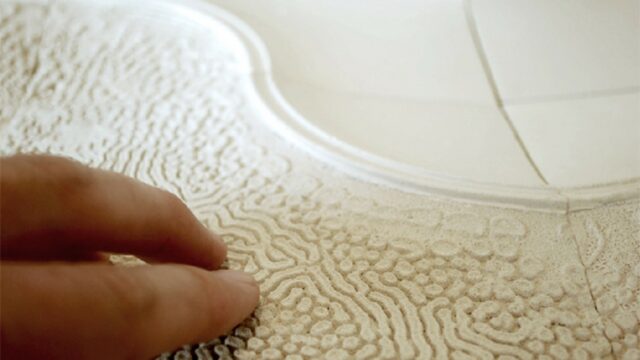The emerging field of probiotic architecture is revolutionising building design by harnessing the power of microbiomes and bacteria to create healthier indoor environments. This approach recognises the importance of microbiomes to human health and explores how beneficial bacteria can be incorporated into building materials and design strategies.
While this is still a field of growing interest, it’s certainly one to watch. Utilising healthier build materials with microbiomes could lead to healthier spaces with less risk for disease, and also falls in line with piquing interest in building with bio-based materials.
Microbiomes and people
Microbiomes, the complex communities of microorganisms that inhabit our bodies and environments, play a crucial role in human health. They contribute to digestion, nutrient absorption, immune system regulation, and even mental well-being. However, modern lifestyles, including the widespread use of antibiotics and antimicrobial products, have disrupted the balance of these microbial ecosystems, leading to potential health consequences such as inflammation, regulating metabolism, and even affecting our moods. Now, architects are looking at bringing ‘good’ bacteria back into the picture, particularly in the built environment.
Incorporating bacteria and microbiomes into building design
Most of us are familiar with probiotics in foods such as yogurt where they help regulate the digestive tract. Using a similar concept, probiotic architecture explores the integration of beneficial bacteria and microbiomes into the design and materials of buildings. By incorporating these microorganisms, architects and designers aim to create environments that support human health and well-being.
For instance, surfaces treated with probiotic coatings can actively break down pollutants, purify the air, and mitigate harmful allergens. The use of porous materials containing beneficial bacteria can also enhance indoor air quality by regulating humidity levels and reducing the presence of harmful substances.
Rebuilding our connection to nature

Over half of the world’s population now live in cities, often surrounded by heavily manufactured, synthetic materials. Richard Beckett, award-winning researcher from University College London, is heavily involved in developing our understanding behind microbiomes and design.
He says, “Evidence suggests that separation of the human from the non-human has gone too far and that missing microbes are playing a role in the emergence of chronic and autoimmune illnesses observed in developed cities. Probiotic design builds on the contemporary understanding of the microbiome and the need for reintroducing environmental microbial diversity into buildings. “
In his award-winning research, Beckett suggests microbiology and architecture should intertwine to maximise healthier microbial conditions which, in turn, lead to healthier buildings and inhabitants. While there is still much more to learn about probiotic properties before they can be fully integrated into buildings, it’s certainly an exciting from. Be sure to watch this space as an upcoming frontier in healthy buildings design.
Content Team
Work in Mind is a content platform designed to give a voice to thinkers, businesses, journalists and regulatory bodies in the field of healthy buildings.




